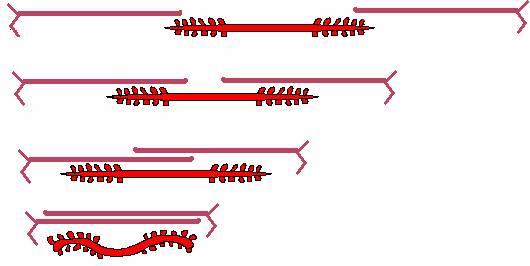Muscle Strength and Force
When a muscle shortens/contracts a force is exerted in same direction as the contraction with a give magnitude based on the strength of that muscle.
During a contraction actin and myosin slide across each other via the myosin's cross bridges. A contraction occurs because the myosin heads point in two directions and pull the actin filaments together like a ratchet.
Each myosin cross bridge is based on the same mechanism and therefore the force exerted is constant for all cross bridges. Thus, the strength or maximum force produced by a muscle depends on the number of cross bridges per unit area. The maximum force/ area is generally constant for vertebrates at 4-5 kg F/cm2.
*** To increase the maximum force, increase the number of cross bridges***
-Note: because myosin cross bridges are unidirectional, at a point where they begin to work against each other, i.e. pull the actin in opposite directions, the maximum force begins to decrease


This is an image of muscle contraction at smallest level: the sliding of actin and myosin across one another. Actin in pink, Myosin with cross bridges in red. At maximum contraction (bottom image) myosin filaments begin to act against one another pulling actin in opposite directions.
The strength of the muscle at each moment of contraction can be graphed as a bell curve; with maximum force occuring at mid contraction when all cross bridges are working together (second image down). At the beginning of contraction, few cross bridges are in contact with the actin, while at maximum contraction the actin filaments are overlapping causing a pull in both directions both causes cause decreased force.